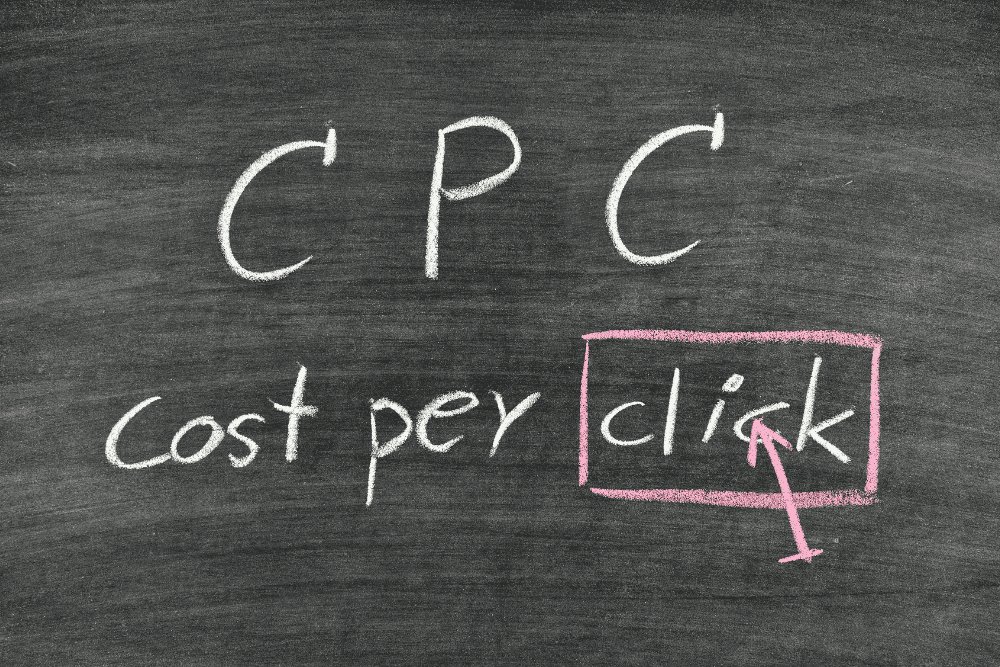A common question people ask: How much are Google ads for small businesses?
In digital marketing, Google Ads stands out as a powerful tool for small businesses aiming to enhance their online visibility and drive targeted traffic. Understanding the financial commitment and strategic approach required for Google Ads is essential for small businesses. This article delves deep into the costs associated with Google Ads, offering small businesses insights into budgeting, campaign optimization, and the overall value Google Ads brings to the digital marketing table.
What Is Google Ads and How Does It Work?
Google Ads, formerly known as Google AdWords, is a cornerstone of online advertising. It allows businesses of all sizes to display ads across Google’s vast network, including its search results, the Google Display Network, and other Google properties. The platform operates on a pay-per-click (PPC) model, meaning you pay only when someone clicks on your ad.
At its core, Google Ads is about connecting businesses with potential customers precisely when they’re searching for related products or services. Whether you’re a local bakery or a burgeoning tech startup, Google Ads can place your business in front of people actively seeking what you offer.
Understanding the Basics:
- Ad Auction: Google Ads uses an auction system to determine which ads appear for each search query. Factors like bid amount, ad quality, and relevance to the searcher play critical roles in this process.
- Keywords: Businesses select keywords they believe potential customers will use when searching for their products or services. Your ad’s likelihood of appearing increases if your keywords align with what people are searching for.
- Campaign Types: Google Ads offers various campaign types, including Search, Display, Video, and Shopping, each catering to different business needs and goals.
By leveraging Google Ads, small businesses can target specific audiences, control advertising costs, and measure the impact of their campaigns with precision.
What Is The Ideal Google Ads Budget for Small Businesses?
Determining the right Google Ads budget hinges on multiple factors, including your industry, competition, and advertising goals. There’s no one-size-fits-all budget, but there are guidelines to help you set a realistic and effective advertising budget.
Key Considerations:
- Industry and Competition: High-competition industries, like legal services or insurance, often require a larger budget due to higher cost per click (CPC).
- Advertising Goals: Your campaign objectives, whether increasing brand awareness or driving sales, can influence your budget allocation.
- Geographic Targeting: Targeting large cities or competitive markets may require a bigger budget compared to smaller, less competitive areas.
A practical approach for small businesses is to start with a modest budget that allows for testing and learning. This could be as little as $10 a day. Monitor your campaigns closely, adjusting your budget based on performance and return on investment (ROI). Remember, the flexibility of Google Ads allows for budget adjustments at any time, giving you control over your ad spend.
Understanding Google Ads Budgeting provides deeper insights into setting and managing your advertising budget effectively.
How to Optimize Your Google Ads Campaign
Optimizing your Google Ads campaign is pivotal to maximizing your return on investment and ensuring your advertising budget is spent wisely. Through optimization, you can improve campaign performance, achieve higher ad ranks, and lower your cost per click (CPC). Here are some strategies to effectively optimize your Google Ads campaigns:
1. Keyword Research and Selection:
- Relevance: Choose keywords that are highly relevant to the products or services you offer. Using Google’s Keyword Planner can help identify keywords with high search volumes in your niche.
- Long-Tail Keywords: Incorporate long-tail keywords—longer and more specific keyword phrases. These typically have lower competition and can better match user intent, potentially leading to higher conversion rates.
2. Crafting Compelling Ad Copy:
- Unique Selling Proposition (USP): Highlight what makes your business stand out. Whether it’s free shipping, exceptional customer service, or an exclusive product, make it clear in your ad copy.
- Call to Action (CTA): Use strong, clear calls to action such as “Buy Now,” “Sign Up Today,” or “Get a Free Quote” to encourage users to take the next step.
3. Improving Quality Score:
- Ad Relevance: Ensure your ads are directly relevant to the keywords you’re bidding on.
- Landing Page Experience: Google evaluates the relevance and usability of your landing page. Ensure it’s mobile-friendly, fast-loading, and provides a good user experience.
- Click-Through Rate (CTR): A higher CTR indicates to Google that your ads are relevant and useful, which can improve your Quality Score and lower your CPC.
4. Ad Extensions:
Utilize ad extensions to provide additional information and increase your ad’s real estate on the search results page. Options include sitelink extensions, call extensions, and structured snippet extensions, among others. These can improve your ad’s visibility and CTR.
5. Continuous Testing and Adjustment:
- A/B Testing: Regularly test different elements of your ads, such as headlines, descriptions, and landing pages, to see what performs best.
- Budget and Bid Adjustments: Adjust your bids for keywords based on performance. Consider using automated bidding strategies that can adjust bids in real time to meet your advertising goals.
By following these optimization strategies, you can enhance the efficiency of your Google Ads campaigns, achieving better results while managing your advertising spend effectively. Remember, optimization is an ongoing process. Continuous monitoring, testing, and tweaking are key to staying ahead in the competitive digital advertising landscape.
For more detailed insights into campaign optimization, explore 10 Strategies to Propel Your Business Forward.
Optimizing Google Ads campaigns can dramatically impact your business’s online presence and bottom line. Implementing the strategies outlined above can lead to more effective campaigns, higher ROI, and greater success in reaching your target audience.
All about Google Advertising Costs: How Does Google Ads Work
Understanding the mechanics behind Google Ads and its costing structure is crucial for small businesses venturing into the world of online advertising. The platform operates on a pay-per-click (PPC) model, meaning advertisers pay a fee each time their ad is clicked. This section breaks down how Google Ads works and the factors influencing your advertising costs.
Understanding the PPC Model:
- Pay-Per-Click (PPC): Google Ads charges advertisers only when a user clicks on their ad. This model allows for targeted advertising, as you’re paying for potential customers who have shown an interest in your product or service.
- Auction System: Google Ads uses an auction system to determine which ads appear for a specific search query. The system considers factors such as your bid (how much you’re willing to pay per click), the quality of your ads, and the landing page experience.
Key Factors That Affect Google Ads Costs:
- Bid Amount: The higher your bid amount, the better your chance of securing a higher ad position. You can choose between manual bidding, where you set bids yourself, or automated bidding, where Google adjusts your bids based on your campaign goals.
- Quality Score: This is a metric that Google uses to measure the quality and relevance of your ads and keywords. A higher Quality Score can lead to lower costs and better ad positions.
- Competition: In high-competition industries, the cost per click tends to be higher due to more advertisers bidding on the same keywords. Researching and selecting less competitive, niche-specific keywords can help manage costs.
- Ad Relevance and Targeting: Creating ads that are highly relevant to your target audience can improve your click-through rate (CTR), impacting your Quality Score positively and potentially lowering your costs.
The Cost of Advertising on Google:
The cost of Google Ads varies widely depending on the factors mentioned above. For small businesses, it’s not uncommon to see average CPCs ranging from $1 to $2 for less competitive keywords to over $50 for highly competitive terms in industries like legal services or insurance.
However, it’s important to note that the effectiveness of your Google Ads campaign is not solely dependent on how much you spend. Focusing on creating high-quality, relevant ads and optimizing your campaigns can lead to significant improvements in your ROI, regardless of your budget size.
For a deeper dive into Google Ads pricing, the Google Ads Pricing Guide provides comprehensive insights into how costs are calculated and tips for managing your advertising spend.
Understanding the dynamics of Google Ads’ pricing is fundamental in crafting a budget that aligns with your business goals. By mastering these elements, you can navigate the complexities of online advertising and make informed decisions that drive success.
What Other Factors Influence My Google Ads Costs?
While the pay-per-click model and auction system are fundamental to understanding Google Ads costs, several other factors can influence how much you end up spending. Recognizing these can help you better manage your budget and refine your advertising strategy.
1. Industry and Competition Level
The industry you’re in plays a significant role in determining your cost per click (CPC). Highly competitive sectors, such as legal services, insurance, and finance, often have higher CPCs because the return on a single conversion can be substantial. Researching your specific industry trends and competitor strategies can provide insights into budget allocation.
2. Keyword Selection
The keywords you choose to target directly impact your Google Ads costs. Broad, highly searched keywords tend to be more expensive due to higher competition. Conversely, long-tail keywords—more specific and often longer phrases—can be less costly and more effective in reaching a targeted audience with a clear intent.
3. Ad Quality and Relevance
Google rewards advertisers who provide a high-quality experience to users. Ads that are directly relevant to the user’s query and lead to well-optimized landing pages tend to have higher Quality Scores. A higher Quality Score can lead to lower CPCs and better ad positioning, affecting the overall cost-effectiveness of your campaigns.
4. Geographic Targeting
Where your ads are shown can also impact costs. Targeting large metropolitan areas or regions with higher competition might increase your CPC. Adjusting your geographic targeting to include or exclude specific locations can help manage costs while reaching your desired audience.
5. Ad Scheduling
The time of day and days of the week you choose to run your ads can influence costs. If you bid during peak times when competition is higher, you might see an increase in CPC. Using ad scheduling to target users during off-peak hours can sometimes reduce costs and still deliver effective results.
6. Device Targeting
Costs can vary depending on whether your ads are viewed on desktops, tablets, or smartphones. Mobile users have different search behaviors and conversion rates, which can influence CPCs. Optimizing your campaigns for specific devices based on your audience’s preferences can be a strategic way to control costs.
Understanding these additional factors is crucial in developing a comprehensive Google Ads strategy. By considering industry norms, refining keyword selection, improving ad quality, and tailoring geographic and temporal targeting, you can make more informed decisions that optimize your ad spend.
For strategies on budget optimization and cost management, Innovative Flare’s Guide to Google Ads offers valuable insights into maximizing your advertising effectiveness.
By keeping these factors in mind, you can navigate the complexities of Google Ads costs more efficiently, ensuring that your advertising efforts are both cost-effective and aligned with your business objectives.
Google Ads Pricing: How Much Does a Typical Click Cost in Google Ads?
One of the most common questions from small business owners delving into Google Ads is about the average cost per click (CPC). While the answer can vary widely depending on the factors previously discussed, having a ballpark figure can help in planning your advertising budget.
Average CPC Across Industries
The cost per click in Google Ads can range significantly across different industries. For instance:
- Retail: Average CPCs might range from $0.45 to $1.00, appealing to businesses due to the direct path to purchase.
- Legal services: This industry sees some of the highest CPCs, often exceeding $6.00, due to the high value of conversions.
- Healthcare: Average CPCs can vary from $2.00 to $2.50, influenced by the competitive nature of this sector.
These figures are indicative and can fluctuate based on market dynamics, competition levels, and geographic targeting.
Strategies to Manage CPC Costs
- Keyword Optimization: Focusing on long-tail keywords can help attract more qualified leads at a lower CPC. These keywords often have less competition and are more specific to the user’s intent.
- Improve Quality Score: Enhancing the relevance of your ads, improving landing page experiences, and increasing CTR can lead to a better Quality Score, which often results in lower CPCs.
- Use of Negative Keywords: Regularly update your list of negative keywords to exclude search terms that are not relevant to your business. This can reduce wasted spend on irrelevant clicks and lower your average CPC.
- Geo-Targeting Adjustments: By targeting specific locations where your audience is more likely to convert, you can optimize your CPC. This might mean focusing on certain cities or regions where your ads perform best.
- Ad Schedule Optimization: Running ads during times when your target audience is most active—but competition is lower—can also help manage costs.
Is There a “One-Size-Fits-All” CPC?
No, the optimal CPC depends on your industry, competition, and specific business goals. What’s affordable and effective for one business might not work for another. It’s crucial to start with a clear understanding of your average customer lifetime value (CLV) and how much you’re willing to pay for a conversion. This insight will guide your bidding strategies and help you assess the effectiveness of your Google Ads spend.
For more detailed guidance on managing Google Ads costs, exploring resources like Google’s Keyword Planner and consulting with experts like those at Innovative Flare can provide personalized insights tailored to your business needs.
Understanding the nuances of CPC within Google Ads is vital for budgeting and campaign strategy. By leveraging the right tools and tactics, small businesses can navigate Google Ads efficiently, maximizing their advertising ROI while keeping costs in check.

Is Google Ads Worth It for Small Business in 2024?
As small businesses contemplate the leap into Google Ads, the pivotal question often arises: Is the investment worth it? The answer hinges on several factors, including your business goals, industry, and ability to optimize campaigns effectively. Let’s delve into the considerations that can help determine the value of Google Ads for small businesses in 2024.
Understanding the Value of Google Ads
Google Ads can offer substantial benefits for small businesses, including:
- Targeted Reach: The ability to target potential customers precisely when they’re searching for products or services like yours is invaluable. Google Ads allows for detailed targeting based on keywords, location, and even the type of device being used.
- Measurable ROI: Unlike traditional advertising mediums, Google Ads provides detailed insights into your campaign performance, including clicks, impressions, and conversions. This data enables businesses to calculate their return on investment (ROI) accurately.
- Flexibility: Google Ads campaigns can be adjusted, paused, or stopped at any time, offering businesses the flexibility to respond to changes in their market or business needs quickly.
Weighing the Costs and Benefits
While Google Ads has the potential to drive significant traffic and conversions, it’s not without its costs. The key to making Google Ads “worth it” involves:
- Budget Management: Setting and sticking to a budget that makes sense for your business size and revenue goals. Remember, the goal is to achieve a positive ROI where the value of conversions outweighs the cost of your ads.
- Campaign Optimization: Continually optimizing your campaigns can help improve their effectiveness and reduce costs over time. This includes refining your keyword strategy, improving ad copy, and enhancing landing pages.
- Understanding Your Audience: The more you understand your target audience’s search behavior, the better you can tailor your ads to meet their needs and capture their interest.
Comparing Google Ads to Other Advertising Platforms
When evaluating the worth of Google Ads, consider how it stacks up against other advertising platforms like Facebook Ads or Bing Ads. Each platform has its strengths and caters to different audiences and objectives. Google Ads is often lauded for its vast search network and intent-driven audience, making it a powerful tool for businesses looking to capture users in the buying cycle.
Real-World Success Stories
Many small businesses have seen substantial growth through Google Ads. For example, a local bakery might use Google Ads to drive local foot traffic with ads targeting nearby customers searching for “fresh pastries near me.” By tracking conversions and using location-based bidding strategies, the bakery can maximize its ad spend and boost in-store visits.
For an in-depth comparison and strategic insights into Google Ads versus other platforms, consider reading Which One’s More Effective at Getting Traffic to Your Website: SEO or PPC?
In conclusion, Google Ads can be a worthwhile investment for small businesses in 2024 if managed effectively. By setting clear goals, carefully managing budgets, and continuously optimizing campaigns, small businesses can leverage Google Ads to grow their online presence, drive traffic, and increase conversions.
Can You Run a Successful Google Ads Campaign on Your Own?
For many small business owners, the question isn’t just whether Google Ads is worth the investment but also whether they can manage these campaigns effectively on their own. The truth is, while it’s entirely possible to run a Google Ads campaign independently, the success of such efforts depends on several factors including time, expertise, and the complexity of your campaigns.
DIY Google Ads Management: Pros and Cons
Pros:
- Cost-Savings: Managing your Google Ads in-house can save on agency or consultant fees, which can be particularly appealing for businesses with limited advertising budgets.
- Direct Control: Running your campaigns gives you direct control over every aspect, from keyword selection to bid strategies and ad scheduling.
- Immediate Adjustments: You can make real-time adjustments to your campaigns based on performance data or changes in your marketing strategy.
Cons:
- Time Commitment: Google Ads management requires a significant time investment, especially for learning best practices, monitoring campaigns, and making ongoing adjustments.
- Learning Curve: There’s a steep learning curve to understanding the intricacies of Google Ads, including the platform’s constant updates and best practices for optimization.
- Potential for Higher Costs: Without deep knowledge of Google Ads, there’s a risk of inefficient spending, such as higher CPCs or budget wastage on non-converting keywords.
Tips for Successful Self-Management
If you decide to manage your Google Ads campaigns, consider these tips to increase your chances of success:
- Leverage Google’s Resources: Google offers extensive resources for advertisers, including the Google Ads Help Center, online courses, and webinars that cover the basics and advanced strategies.
- Start Small: Begin with a focused campaign and a limited budget to test the waters. Use this as a learning phase to understand how Google Ads works and what strategies are most effective for your business.
- Use Automated Bidding Strategies: Automated bidding can help manage bids based on your campaign goals, taking some of the guesswork out of the process for beginners.
- Monitor and Adjust Regularly: Regularly review your campaign performance data to identify what’s working and what isn’t. Make adjustments to your bids, keywords, and ad copy based on these insights.
When to Consider Professional Help
There comes a point when the complexity of managing Google Ads or the time required becomes too much for a business owner to juggle alongside other responsibilities. If your campaigns are growing in scale, or if you’re not seeing the desired results, it might be time to consider professional help. An experienced agency or certified Google Ads professional can bring expertise and insights that significantly improve your ROI.
For those considering professional management, Innovative Flare’s Google Ads services offer tailored solutions to help small businesses maximize their Google Ads performance.
In essence, while running a successful Google Ads campaign on your own is achievable, it requires dedication, continuous learning, and a willingness to experiment. Whether you choose to manage your campaigns independently or seek professional assistance, the key is to stay focused on your goals, be adaptable, and make data-driven decisions to ensure the success of your Google Ads efforts.
FAQs: Your Questions About Google Ads for Small Businesses Answered
Navigating Google Ads can often leave small business owners with more questions than answers. This FAQ section aims to address some of the most common queries, providing clear, actionable insights to help you make the most of your Google Ads efforts.
How much should small businesses spend on Google Ads per month?
The ideal monthly spend varies greatly depending on your industry, competition, and advertising goals. Start with a budget you’re comfortable with, even if it’s as low as $300-$500 per month, and adjust based on the performance and ROI of your campaigns. It’s vital to base your budget on your business’s unique circumstances and goals.
Can Google Ads generate real leads for small businesses?
Absolutely. Google Ads is highly effective at generating leads, especially when campaigns are well-targeted and optimized. Using precise keywords and crafting compelling ad copy can attract users who are actively seeking the products or services you offer.
How quickly can I see results from my Google Ads?
Some businesses see results within days of launching their campaigns. However, it’s important to give your campaigns time to gather data and go through optimization cycles. Typically, a period of 2-3 months is recommended to truly gauge the effectiveness of your Google Ads strategy.
What are the best practices for setting up a Google Ads account?
Key best practices include:
- Conducting thorough keyword research.
- Creating tightly themed ad groups.
- Writing clear and compelling ad copy.
- Setting up conversion tracking from the start.
- Regularly reviewing and optimizing your campaigns based on performance data.
How does Google Ads compare to SEO?
Google Ads provides immediate visibility and leads by placing your ads at the top of search results, while SEO is a longer-term strategy aimed at building organic visibility. Both are crucial for a well-rounded digital marketing strategy, and many businesses find success in using them together.
Is there a minimum budget for Google Ads?
No, Google Ads does not require a minimum daily budget, but the effectiveness of your campaigns can be limited by a very low budget. It’s about finding a balance that allows you to compete effectively for clicks and conversions.
How to measure the success of your Google Ads campaign?
Success can be measured through several key performance indicators (KPIs), including click-through rate (CTR), conversion rate, cost per conversion, and return on ad spend (ROAS). Setting up conversion tracking is crucial to accurately measure these metrics.
What happens if I exceed my Google Ads budget?
Google allows for some fluctuation in daily spend, but you won’t be charged more than your monthly budget cap. If your campaigns consistently exceed your daily budget, it’s a sign to reassess and possibly increase your budget to capture more traffic and conversions.
Should I focus on the Search Network or Display Network?
The choice between the Search and Display Networks depends on your advertising goals. The Search Network is ideal for capturing users with high intent, while the Display Network can be great for brand awareness and reaching users based on interests or demographics.
By addressing these FAQs, we hope to have provided valuable insights to help you navigate the complexities of Google Ads for your small business. For further guidance and personalized advice, contact Innovative Flare — we’re here to help your business thrive with effective digital marketing strategies.
Let Innovative Flare Boost Your Business with Google Ads
Embarking on the Google Ads journey can transform your small business, connecting you with targeted customers actively seeking what you offer. Whether you’re looking to generate leads, increase sales, or boost brand awareness, Google Ads can be a powerful tool in your digital marketing arsenal. However, navigating the complexities of Google Ads requires expertise, time, and a strategic approach to maximize your return on investment.
Why Choose Innovative Flare?
At Innovative Flare, we understand the unique challenges and opportunities small businesses face in the digital landscape. Our team of certified Google Ads professionals is committed to designing customized campaigns that align with your business goals, target audience, and budget. Here’s how we can help:
- Tailored Strategy: We don’t believe in one-size-fits-all solutions. Our approach starts with understanding your business, followed by crafting a Google Ads strategy that’s tailored to your specific needs.
- Expert Management: From keyword research to campaign setup, ongoing optimization, and detailed reporting, our team handles every aspect of your Google Ads campaigns. We focus on driving results, so you can focus on running your business.
- Transparent Reporting: With Innovative Flare, you’ll always know how your campaigns are performing. Our regular, comprehensive reports provide insights into key metrics, campaign progress, and actionable recommendations for further improvement.
Take Your Business to the Next Level with Google Ads
Whether you’re new to Google Ads or looking to optimize existing campaigns, Innovative Flare is here to guide you every step of the way. Let us help you unlock the full potential of Google Ads, driving meaningful traffic and conversions that contribute to your business’s growth and success.
Ready to boost your business with Google Ads? Contact us today to get started!
 seolounge
seolounge



